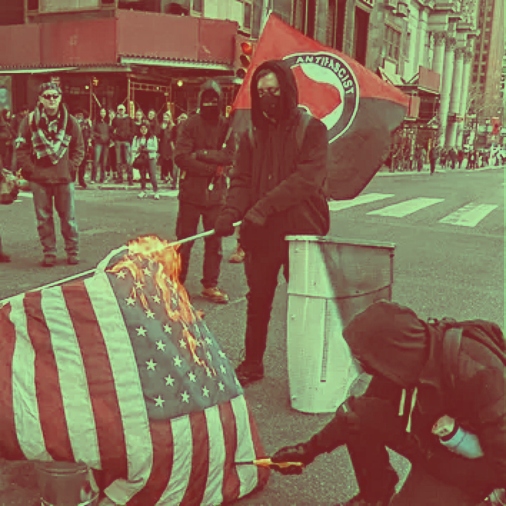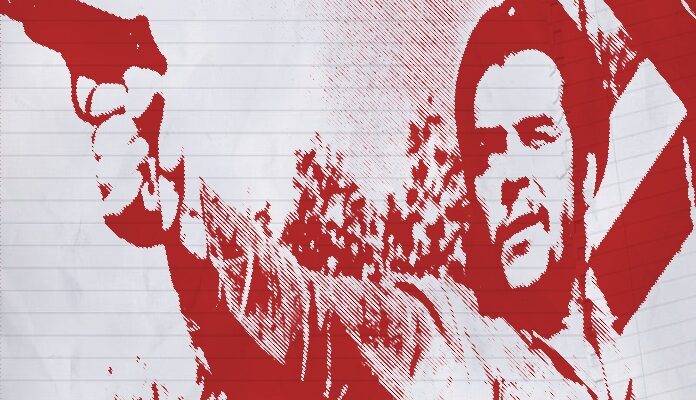The true calamity unleashed on the world, beginning with the orchestrated madness of the French Revolution and then with Marx’s systematic articulation of a socio-economic alternative, wasn’t really an ideology but the idea of perpetual and “Ultimate Revolution.” This is the restless and insatiable desire to tear down the established order, not so much to replace it with a well-conceived alternative, but for the delight of destruction itself. It appeals to a disturbingly large minority of any population.
For all the poetic and rhetorical flourish of the revolutionary arguing that painful transition is necessary in order to have justice and peace, it is not only never achieved (because it is not desired), but the candid letters and accounts of the revolutionaries themselves reveal clearly it is the demonic lust for control, personal power, and the simple love of violence.
Before Castro came to power, he and his uppity colleagues were called the Resentfuls by the Cubans. Though born into relative comfort, an early toxic exposure to ideas and people, perverted them into believing they weren’t capable enough, smart enough, or even attractive enough to succeed. In turn, they resented those that were capable, successful, and simply happy.
Catechism of Revolt
One of the best prisms to understand the idea of Ultimate Revolution is to observe it through Lenin, and the books that fixed his mind and life’s intent.
A book has the power to shape because it is a sustained and intimate encounter with another mind. They work on you at a deeper level than even the most profound conversation you’ll ever have. They can be revisited, a jarring sentence read over and over again, underlined, written down, and taped on a wall.
The author carefully selects the words, metaphors, and allusions to be used. The most impactful final structure of an idea will be tested in multiple variations, sometimes over weeks and months or even years. An argument, a character or a story’s arc can be crafted to persuade and move in ways the most gifted orator could never spontaneously achieve.
Lenin read Marx and understood the implications. But, it didn’t inspire him. He was clear about this in his letters. Marx provided a framework, but The Catcher in the Rye for Lenin was What Is to Be Done?, a novel he read five times over the summer as a 17-year-old. It was what he said convinced him to be a revolutionary.
The utterly ephemeral point of the novel’s revolution was a vague “happiness for the masses” to be achieved through a bizarre pairing of industrial production and a simple communal lifestyle. The novel romanticizes small socialist cooperatives, while calling on the inspired intellectual class to step up as the prophets and educators of the laboring masses. Like those believing in reincarnation and thinking they were once a pharaoh or Napoleon rather than a goat herder, it seems all revolutionaries are called to be the intellectual leaders who will be guiding the potato and cabbage production.
The possibly insane but deadly serious anarchist and nihilist, Sergey Nechayev wrote The Revolutionary Catechism. Lenin said of the Catechism, and other writings from Nechayev, that they would be mandatory reading in the new order to come.
The opening paragraphs capture the radical spirit that animated the early revolutionaries and Bolsheviks:
The revolutionary is a doomed man. He has no personal interests, no business affairs, no emotions, no attachments, no property, and no name. Everything in him is wholly absorbed in the single thought and the single passion for revolution.
The revolutionary knows that in the very depths of his being, not only in words but also in deeds, he has broken all the bonds which tie him to the social order and the civilized world with all its laws, moralities, and customs, and with all its generally accepted conventions. He is their implacable enemy, and if he continues to live with them it is only in order to destroy them more speedily.
The revolutionary despises all doctrines and refuses to accept the mundane sciences, leaving them for future generations. He knows only one science: the science of destruction. For this reason, but only for this reason, he will study mechanics, physics, chemistry, and perhaps medicine. But all day and all night he studies the vital science of human beings, their characteristics and circumstances, and all the phenomena of the present social order. The object is perpetually the same: the surest and quickest way of destroying the whole filthy order.
The person inspired by this seems similar to the most cliched caricature of a Swedish Death Metal fan. And yet, they truly are legion.
Endless similar pamphlets of the mid-19th and early 20th Century were widely distributed throughout Europe and were outlawed because they routinely called for rivers of blood and the necessary slaughter of the men, women, and children of the oppressive classes. They were direct, passionate, merciless, and unapologetic. Sound familiar?

The explicit instructions of how to create subversive revolutionary cells and larger organizations, complete with the discipline needed to govern them, was laid out in these publications as clearly as any U.S. Army instructional manual.
These were the books, writings, and often extended time spent with their authors that formed Lenin, and without exception, all of the early revolutionaries as they recall in their own writings. They were true believers and gave their lives and souls to the cause of the Ultimate Revolution.
Let There be Hell on Earth and Let it Begin with Me
There is not a thin dime’s difference in the murderous intent and zeal of the revolutionaries of the 1870-71 Paris Commune or the Bolsheviks in the years leading up to the 1917 Revolution and those of today.
The books being read now, from the intellectual class down to the wild-eyed denizens at the street level, are literally the same. Sure, they’ve been supplemented over the decades, but little truly new or awe-inspiring material has been added to their canon, a great deal of which regularly appears on the reading lists and curriculum in universities today. The lives and deeds of previous revolutionaries are reverenced. And for every new generation, the enemies of the revolution are recast as it is convenient to justify the never-ending call for perpetual revolt.
The genie was let out of the bottle. For two centuries, the call for violence in the name of having earthly paradise, justice, and peace grinds on. Again, those impossible goals are neither truly desired nor the beliefs sincerely held. From Lenin to Che Guevara to the filthy antifa pedophile, it is intoxicating and feels good to be the underdog revolutionary. It provides purpose and an excuse to indulge in personal and social depravity. These people bear the indelible mark of their master with little chance of recovery.
There is little parity in this fight. The most committed Southern Nationalist, patriot, or man of the Right can’t demonstrate his all-in commitment and point to his burned bridges and dedicated lifestyle as proof.
We have completely underestimated the personal allure to the total and complete liberating allegiance to answering Hell’s call for Ultimate Revolution.

‘Cause down in Alabama, you can run, but you sure can’t hide.






With God all things are possible.
Truly the revolutionary is wasteful beast, on the other hand, the restorationist is an innovative naturalist, replenishing that which is natural is civil society.
Very interesting piece 👏🏻